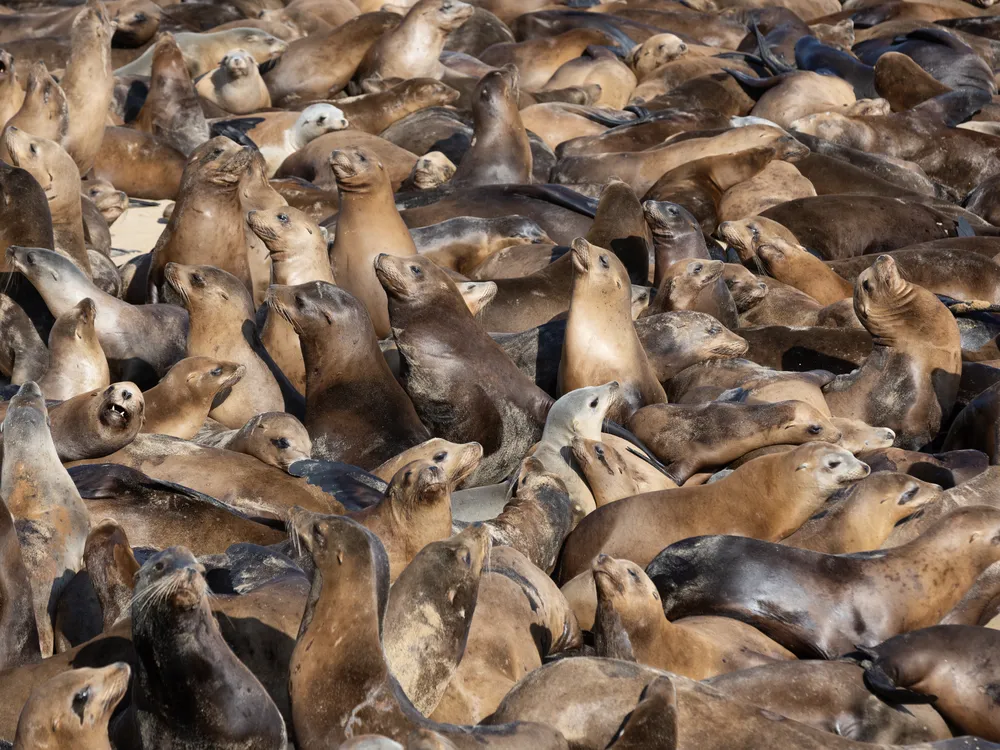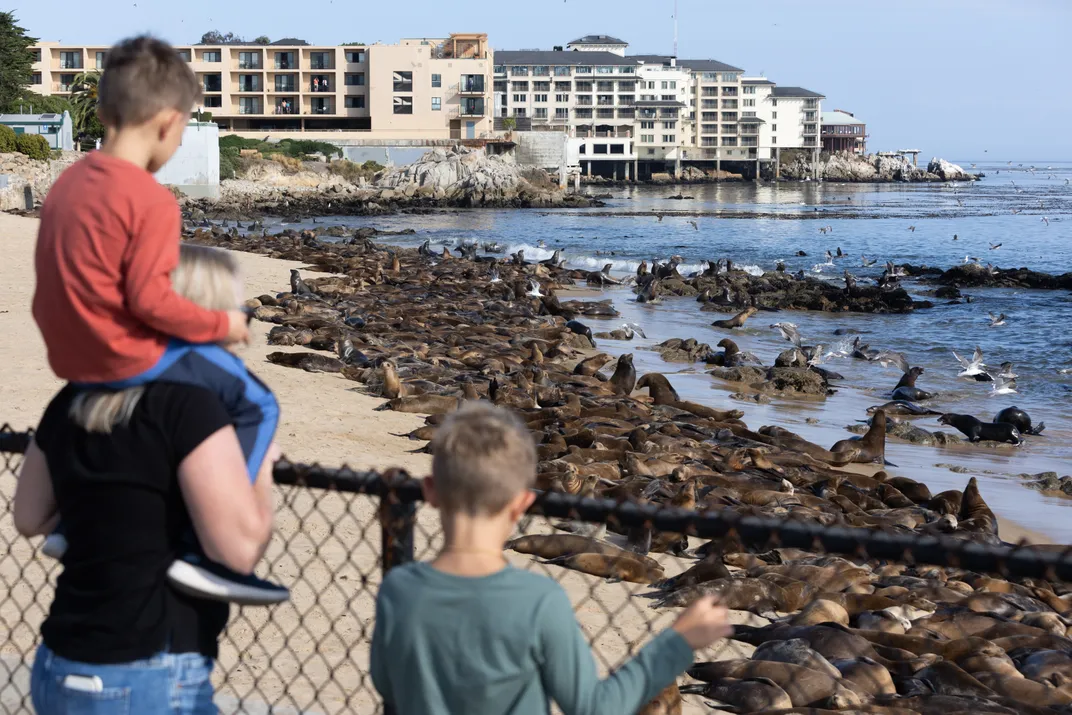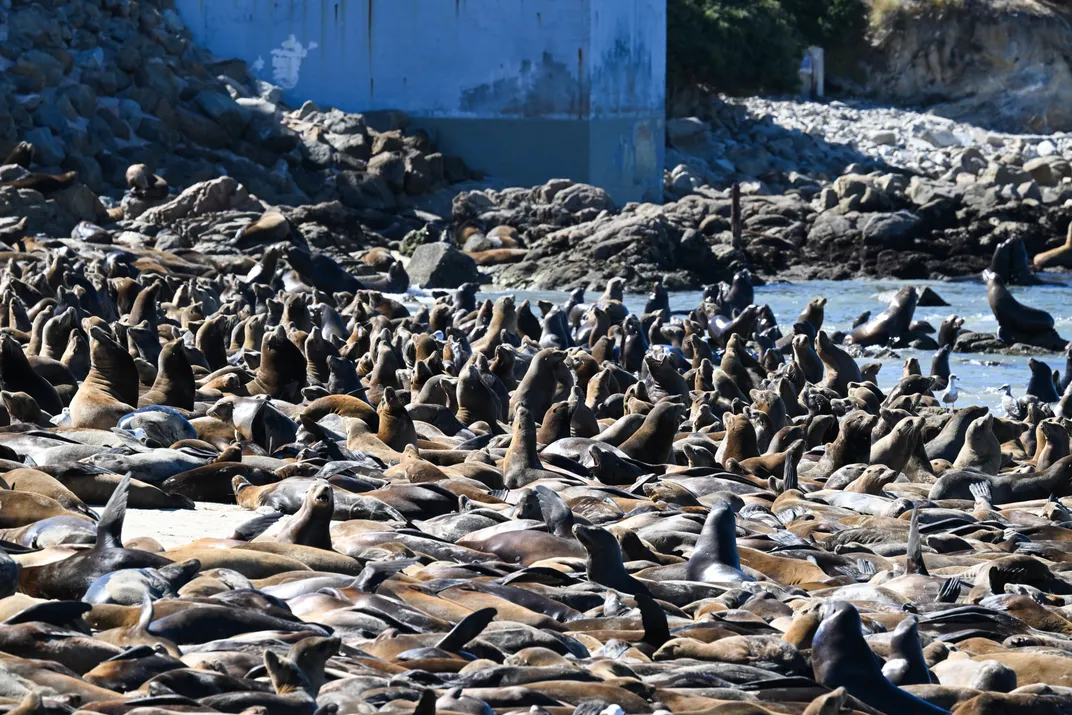See Hundreds of Sea Lions Take Over a Popular California Beach
The pinnipeds are resting on San Carlos Beach as part of their annual northward journey from the Channel Islands, prompting officials to close it down

California sea lions have taken over a popular beach, prompting local authorities to close the area indefinitely.
Hundreds of the marine mammals are congregating on San Carlos Beach, a public park managed by the city of Monterey on California’s central coast. Monterey is roughly 120 miles south of San Francisco and approximately 320 miles north of Los Angeles.
Until the sea lions decide to leave, beachgoers and scuba divers will have to find somewhere else to sunbathe and swim. The creatures, which are taking a break from their northward migration, typically stay for about a month, per the San Francisco Chronicle’s Warren Pederson.
“We’ve received questions on when San Carlos Beach will reopen, and we reached out to the sea lions for a response,” the city joked in a video posted on social media.
City staffers are working with experts at the Monterey Bay National Marine Sanctuary to keep tabs on the situation. The sanctuary—which is nicknamed the “Serengeti of the Sea” for its abundant marine life—stretches across much of the central coast of California and encompasses the waters off San Carlos Beach.
So far, tourists and residents have been respectful of the closure. Many people have dropped by to catch a glimpse and take photos of the pinnipeds. Their congregation also coincided with Monterey Car Week, an annual event that attracts automotive hobbyists from around the world.
“Everyone seems to be really understanding that we have to share the area with other species, so we’re just managing it until the sea lions decide it’s time to go back,” Laurie Huelga, a spokeswoman for the city, tells the Monterey Herald’s Kyarra Harris.

Since 1972, sea lions and other creatures have been safeguarded by the federal Marine Mammal Protection Act. The law makes it illegal for humans to harass, harm, feed or kill marine mammals in the United States. As such, local officials have encouraged sea lion enthusiasts to give the animals a wide berth of at least 150 feet.
“People just need to think about how they would feel if they were resting on their bed taking a nap and something big kept coming and chasing them out of the house,” says Marge Brigadier, a volunteer with Monterey Bay National Marine Sanctuary, to Reuters’ Dylan Bouscher.

According to local officials, the sea lions on San Carlos Beach are part of the group that breeds on the Channel Islands off the coast of Southern California. They journey northward at the end of every summer, but they don’t often take up residence on San Carlos Beach. Usually, they hang out closer to Monterey’s Fisherman’s Wharf or on other nearby sandy shorelines.
Monterey serves as a rest stop of sorts, where the sea lions can gorge on fish before continuing onward to Northern California.
“They’re just here on holiday, having a good time resting and eating,” Huelga says to the Monterey Herald.
California sea lions (Zalophus californianus) are highly intelligent, playful eared seals that live along the West Coast of North America. They’re known for making loud barking noises to communicate with each other. They are large creatures, with males weighing up to 700 pounds and stretching 7.5 feet long. The smaller females weigh 240 pounds and grow to six feet.
Hunting in coastal waters, California sea lions eat a wide array of prey, including sardines, squid, anchovies, mackerel and rockfish. California sea lions typically live between 20 and 30 years.
An estimated 355,000 individuals live along the coast of California, as well as on both sides of Mexico’s Baja California peninsula, according to the National Park Service. The International Union for Conservation of Nature classifies California sea lions as a species of “least concern.”

